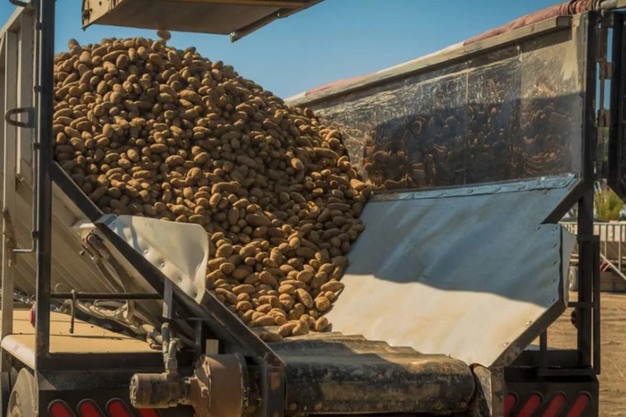Idaho is anticipating a reduction in Russet potato acreage for its upcoming crop. "The acres planted are down significantly. I've heard there will be between 305,000 acres and 315,000 acres. Last season overall the industry had 328,000 acres," says Ryan Wahlen of Pleasant Valley Potato.
Then, in yields, June saw a late frost in parts of Idaho that looks to be impacting potato yields though the bigger issue could be the hail storms that came through. There are reports that some fields have insurance claims reflecting damage as high as 70 percent of the crop. "Weather events like that set the crop back. Damaged plants tend to "drop a set". That just means that the plant releases the tubers that have begun to form to direct its energy toward survival and leaf growth. The plant begins the process over again and the new growth tubers tend not to get as big," says Wahlen.
He anticipates starting to harvest new crop in the third to fourth week of August which matches historical timing, though some growers and shippers may push back shipping their new crop depending on how much of the storage crop is on hand.

Storage crop status
As for the storage crop supply of potatoes, most Idaho shippers will run with storage crops until that new crop starts with some running slightly longer. Other potato-producing regions such as Washington or Wisconsin though may be done earlier than that. "Generally there is more storage crop available now than compared to previous years at this time," says Wahlen.
Meanwhile, potato demand has been good. "Considering where we started and how many potatoes needed to be moved this season, for us to be able to say we're cleaning up and finishing here three to four weeks from now means that demand has been pretty good," says Wahlen, adding that while demand doesn't necessarily strengthen in the summer, regions still shipping storage crop potatoes become increasingly limited throughout the season.
On pricing, while it's still below the cost of production, it has been slowly increasing over the past four to five weeks. That is anticipated to continue as the storage crop continues to move. "Then typically new crop begins at a price point higher than available storage crop," says Wahlen. "The lack of a significant gap probably means that the new crop price will not be at as much of a premium, relative to old crop pricing, as we've seen in the past."
 For more information:
For more information:
Ryan Wahlen
Pleasant Valley Potato
Tel: +1 (208) 397-4194
[email protected]
http://www.pleasantvalleypotato.com/










